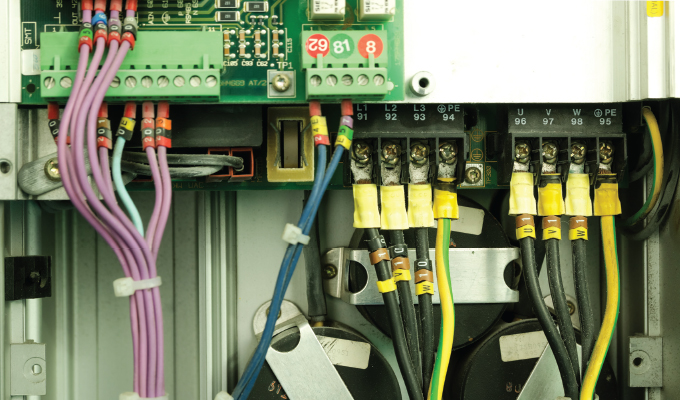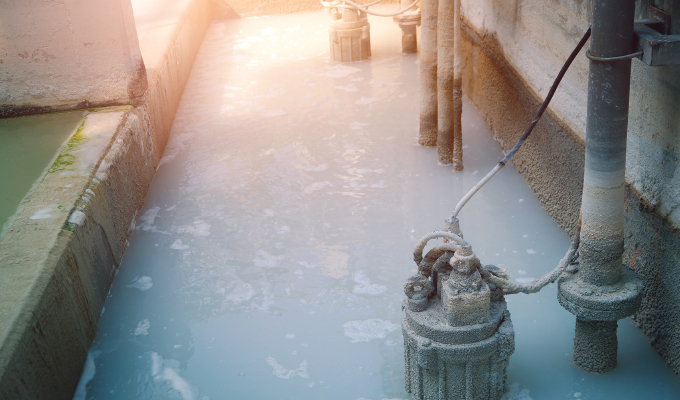By SWPA Executive Director Adam Stolberg and Chris Caldwell, Pete Duty & Associates
Whether operators are seeking firmer control of their pumping speeds or greater energy efficiency, variable frequency drives have proven their worth in numerous applications. But what are their benefits for submersible wastewater pumping applications specifically? And how can pump operators ensure that their submersibles and drives work together to maximize their mutual advantages? To answer those questions, SWPA Executive Director Adam Stolberg and SWPA member Chris Caldwell of Pete Duty & Associates engaged in a lively discussion—the conclusion of which follows below.
From an operator’s perspective, how does a VFD make a submersible pump more responsive?
The use of VFDs allows the operator tune the pump output and acceleration and deceleration ramps to the particular needs of the application. The pump output can be adjusted to the exact needs of the process as opposed to running at full speed all the time. This can reduce start-stop cycling of the pumps and help manage pumping systems where the flow requirements vary widely throughout the day, or where there is inadequate storage in the wet well for the demand. Additionally, the accel and decel ramps can be controlled to eliminate pressure surges, water hammer, slamming check valves, and other unpleasant potential issues in pumping systems.
Can a VFD influence the life-cycle of a submersible pump in the field?
A VFD can influence the life-cycle of a pump, but is not always a positive influence. In systems where the motor is designed for use with a VFD, the pump is selected properly for reduced speed operation in the system, and the pump is operated at a flow meeting the pump manufacturers guidelines, the life of the pump is likely to be extended. However, in systems where any of the above are not true or have not been considered, the life of the pump could be reduced. One of the most common operator errors for VFD pumping systems that are otherwise well designed is the tendency to operate the pumps too slow. Operation at speeds and, therefore, flows that are too low for the pump can result in damage to the pump from recirculation cavitation, vibration, higher than normal forces on the shaft and bearings, and so on. These will cause failures and reduce the life of the pump.

Which applications can reap the biggest benefits?
In terms of applications where the biggest benefits can be reaped, those include pumping systems on clean or relatively clean liquid, where the percentage of static head in the total head is relatively low (below 50 percent as a general rule of thumb), and where the pump has been selected to run near to, or even better, to the right of the best efficiency point on the curve. Applications where there are a lot of solids in the liquid (cause clogging at reduced speed), high percentage of static head, or pumps selected too far left on the curve are not generally good VFD applications.
How can installing a VFD into a pumping system bring down maintenance and repair costs?
Installing a VFD in a pumping system will not automatically bring down maintenance and repair costs—and could actually raise these costs if the pump system is not suitable for VFD use. In systems where the motor is designed for use with a VFD, the pump is selected properly for reduced speed operation in the system, and the pump is operated at a flow meeting the pump manufacturers guidelines, maintenance and repair costs are likely to be reduced. The benefit comes from operating the pump most of the time at reduced speed (potentially cooler motor temperatures), and starting and stopping it more gently, reducing water hammer, pressure surges, and mechanical stress.
However, in systems which are not suitable for VFDs from either a motor design, pumping application, or pump selection standpoint, maintenance costs could be increased. These costs can include motor insulation failure, pump cavitation from running too far left on the curve at reduced speed, bearing, seal, and shaft issues, to name a few. Reducing maintenance costs generally falls near the bottom of a list of the benefits of VFD pumping.
FOR MORE INFORMATION
The mission of the Submersible Wastewater Pump Association (SWPA) is to enhance the global wastewater environment by informing, educating, and providing leadership in the design, procurement, and operation of submersible wastewater pumping systems. For more information, visit www.swpa.org.
MODERN PUMPING TODAY, April 2020
Did you enjoy this article?
Subscribe to the FREE Digital Edition of Modern Pumping Today Magazine!



